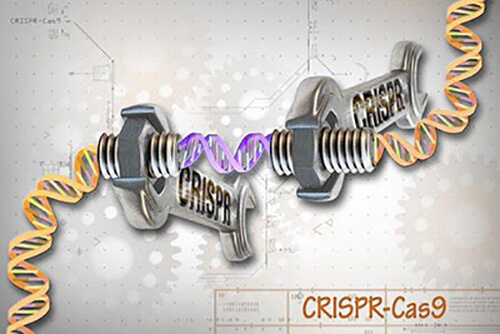



Business Inquiry
Global:
Email:marketing@medicilon.com
+1(781)535-1428(U.S.)
0044 7790 816 954 (Europe)
China:
Email: marketing@medicilon.com.cn
Tel: +86 (21) 5859-1500



A collaborative team of researchers from the Wellcome Trust Sanger Institute and the University of Cambridge has just described their recent work on generating a new CRISPR (clustered regularly interspaced short palindromic repeats) genome-editing platform that is freely available and works as a single-step system within every cell of the body and at every stage of development. The investigators are optimistic that this new approach will aid researchers in developmental biology, tissue regeneration, and cancer.

The U.K.-based teams developed two complementary methods—sOPiTKO, a knockout system that turns off genes by disrupting the DNA, and sOPTiKD, a knockdown system that silences the action of genes by disrupting the RNA. Using these two methods, scientists can inducibly turn off or silence genes in any cell type at any stage of a cell’s development from stem cell to fully differentiated adult cell. These systems will allow investigators to explore the changing role of genes rapidly and accurately as the cells develop into tissues such as liver, skin, or heart, and discover how this contributes to health and disease.
“As a cell develops from being stem cell to being a fully differentiated adult cell, the genes within it take on different roles,” explained co-senior study investigator Ludovic Vallier, Ph.D., senior group leader at the Wellcome Trust Sanger Institute and professor of regenerative medicine at the University of Cambridge. “Before, if we knocked out a gene, we could only see what effect this had at the very first step. By allowing the gene to operate during the cell’s development and then knocking it out with sOPTiKO at a later developmental step, we can investigate exactly what it is doing at that stage.”
The findings from this study were published recently in the journal Development in an article entitled “Optimized Inducible shRNA and CRISPR/Cas9 Platforms for In Vitro Studies of Human Development Using hPSCs.”
The human genome contains roughly 20,000 genes confined within each of the approximately 37 trillion cells of the human body. So, to produce every tissue and cell type in the body, different combinations of genes must operate at different moments in the development of an organ or tissue. Being able to turn off genes at specific moments in a cell’s development allows their changing roles to be investigated.
The sOPTiKO and sOPTIKD methods allow researchers to silence the activity of more than one gene at a time, so they have the possibility now to investigate the role of whole families of related genes by knocking down the activity of all of them at once.
Additionally, the freely available system allows experiments to be carried out far more rapidly and cheaply. sOPTiKO is highly flexible so that it can be used for all cell types without needing to create a new system each time. sOPiTKD allows vast improvements in efficiency over traditional CRISPR methods as it can be used to knock down more than one gene at a time. Previously, to silence the activity of three genes, researchers had to knock down one gene, grow the cell line, and repeat for the next gene, and then again for the next. Now it can do it all in one step, cutting a 9-month process down to just 1 to 2 months.
“Two key advantages of using sOPTiKO/sOPTIKD over other CRISPR editing systems are that it is truly inducible and can work in almost any cell type,” noted co-lead study author Alessandro Bertero, Ph.D., a postdoctoral researcher in Dr. Vallier’s laboratory. In the past, we have been hampered by the fact we could study a gene’s function only in a particular tissue. Now you can knock out the same gene in parallel in a diversity of cell type with different functions.”
 Relevant
news
Relevant
news